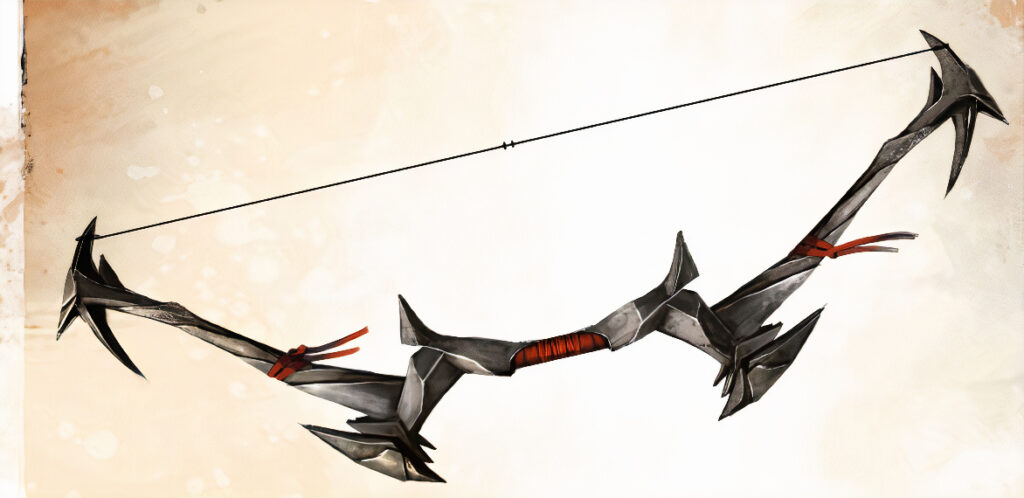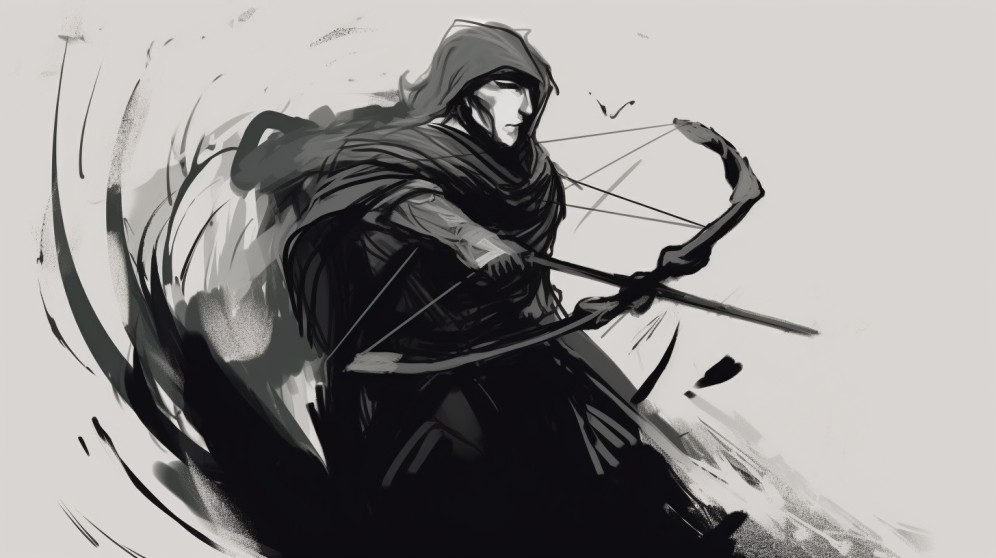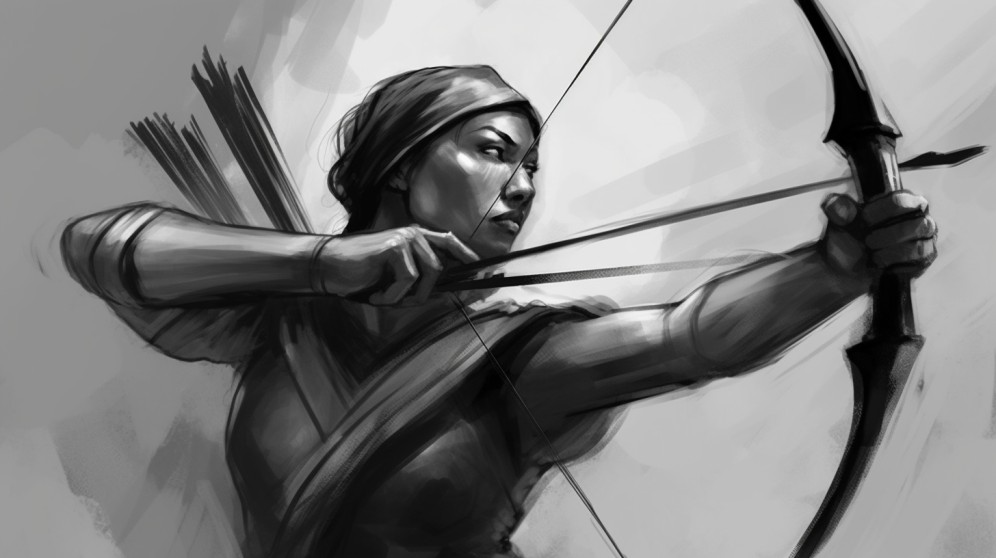The Art of Ranged Combat: Mastering the Longbow in Dungeons and Dragons 5e
The intoxicating allure of battle often lies in the cacophony of metal striking metal, the visceral sensation of clashing blades, and the evocative narrative crafted by a skilled Dungeon Master. While the quintessential image of combat may be one of warriors locked in close-quarters combat, brandishing their swords and daggers, the art of warfare extends beyond the confines of melee encounters. Adept strategists recognize the value of prudence and ingenuity in navigating the battlefield, often opting to keep a safe distance from adversaries and employing the prowess of ranged weaponry.
The longbow is a powerful tool of war that has earned its place in history as the perfect long-range weapon. To use this impressive weapon well, you need not only skill and dexterity but also a deep understanding of how distance, accuracy, and power work together. A well-placed shot from a longbow can do a lot of damage and go right through the enemy’s defenses. In the hands of a skilled fighter, the longbow is a tactically useful weapon that lets its user strike from a distance, reducing the chance of getting hurt in return.

Before you can learn to use the longbow well, you need to know everything about it, such as how much damage it can do and how far it can shoot. Archers-to-be have to think about the pros and cons of adding the longbow to their arsenal. They have to weigh the benefits of the longbow against the possible drawbacks of giving this weapon valuable inventory space. To help you decide, we’ve put together an in-depth guide to the Longbow in DnD 5e. It has all the information and tips you need if you want to learn more about ranged combat.
What is the Longbow in D&D 5e?
The longbow, a martial ranged weapon, inflicts 1d8 piercing damage and carries a price tag of 50 gold pieces. With a modest weight of 2 pounds, this remarkable weapon stands at an impressive 6 feet in height, enabling the wielder to draw the arrow to its full length. The longbow’s design features a gentle curve and slender limbs, which contribute to its exceptional performance on the battlefield.
Constructed primarily from wood, both the longbow and its accompanying arrows showcase the meticulous craftsmanship and attention to detail that distinguish this weapon. Brass or iron is used to make the arrowheads, which are paired with natural feathers to make the arrows more stable and accurate in flight. As a long-range weapon, the longbow lets its user aim at enemies within a certain range, which we’ll talk more about later.
Given the martial nature of this weapon, proficiency in its use is typically reserved for seasoned soldiers and fighters with extensive combat experience. Consequently, only a select few individuals possess the requisite skills and expertise to wield the longbow effectively.
Longbow Stats

Ranged weapon (martial, bow)
- Category: Items
- Damage: 1d8
- Damage Type: Piercing
- Item Rarity: Standard
- Properties: Ammunition, Heavy, Range, Two-Handed
- Range: 150/600
- Weight: 2
Range
The range of a longbow in D&D 5e is denoted by two numbers, such as (150/600 feet). The first number, enclosed in parentheses, represents the normal range (150 ft), while the second number indicates the longbow’s long-range (600 ft).
The normal range means you can target any creature within 150 feet, or 30 squares if you consider each square tile on a battle map to be 5 feet in size. That’s quite far! If your target is farther than 150 feet, you can still attack, but you’ll be at a disadvantage when rolling your attack roll. In this case, you’ll need to roll 2d20 instead of a single 1d20, and then pick the lower of the two dice. If you’re proficient with the weapon, you’ll add your Strength modifier to the chosen die to determine your attack roll.
Keep in mind that having a hostile creature within 5 feet of you, as long as they’re not incapacitated and can see you, also puts you at a disadvantage during a ranged attack. If you’re fond of using ranged attacks, it’s best to keep your enemies at bay, or your attacks might not be as effective.
Let’s look at an example: your target is 80 feet away, which falls within the normal range. In this case, you’d make an attack roll as usual, since the distance isn’t greater than 150 ft. However, if the target is 200 feet away, you’d face a penalty on your attack roll. When rolling, you’d roll 2d20. Let’s say you rolled an 8 and a 17. Your attack roll would be 8 since it’s the lower of the two rolls.
Lastly, the longbow’s range indicates that you can’t attack a creature beyond 600 feet, or 120 squares on a standard battle map. Players aren’t allowed to attack at distances exceeding this limit.
Ammunition
When using a longbow, you’ll need ammunition—specifically, longbow arrows—to make ranged attacks. Without arrows, you can’t execute ranged attacks with the longbow. Each attack requires one arrow from your ammunition, so it’s crucial to have a sufficient supply on hand when you plan to use the longbow.

If you run out of arrows, don’t forget to pay a visit to the local fletcher to restock. Part of the attack process involves grabbing an arrow from its container to prepare for a ranged attack. Once the battle is over, you can spend a minute searching the battlefield to recover half of the arrows you used during the fight. For example, if you used 20 arrows, you could find and retrieve 10 of them by spending about a minute searching the area.
In case the situation takes a turn for the worse and an enemy gets too close, you can still use your longbow for melee attacks, though it becomes an improvised weapon. According to the Player’s Handbook, page 148, ranged weapons can serve as improvised weapons, dealing 1d4 damage. However, when using this attack method, you won’t be able to add your proficiency bonus to the attack rolls.
Heavy
Heavy weapons, like the longbow, can be challenging for small and tiny creatures to use effectively. If a creature of this size tries to attack with a longbow, they’ll be at a disadvantage on their attack rolls. In this situation, you’ll roll 2d20 instead of 1d20 for the attack and must choose the lower of the two rolls.
Here’s a table outlining races classified as Tiny and Small creatures:
| Race | Size | Source |
|---|---|---|
| Custom Lineage | Small/Medium | Tasha’s Cauldron of Everything, page 8 |
| Kobold | Small | Volo’s Guide to Monsters, page 119 |
| Halfling (including subraces) | Small | Player’s Handbook, page 26 |
| Goblin | Small | – Volo’s Guide to Monsters, page 119 (for Forgotten Realms campaign setting) – Guildmaster’s Guide To Ravnica, page 16 (for Ravnica campaign setting) – Eberron: Rising From the Last War, page 26 (for Eberron campaign settings) |
| Gnome (including all subraces) | Small | Player’s Handbook, page 35 |
Two Handed
The longbow is a two-handed weapon, which means you need both hands to use it effectively and make ranged attacks. As a result, you can’t use the longbow as a shield while attacking with a single-handed weapon.
Although you can hold a longbow with just one hand, you won’t be able to make ranged attacks this way. If you’re holding the longbow with one hand and something else in the other hand, you still won’t be able to make ranged attacks. If the object you’re holding is a weapon, you can stow it in your backpack, but doing so during combat might cost you an action. Alternatively, you could drop the object entirely, as this wouldn’t require any action.

How to Use the Longbow
Using a longbow in battle is similar to how you would use a melee weapon. First, figure out how far you are from your target to make sure it is within the longbow’s range. The Dungeon Master (DM) will then tell you about any changes to your attack that are important, like if you have an advantage over your opponent. The last step is to roll to see how your attack will go.
If you know how to use a longbow well, your attack roll would be 1d20 + Strength modifier + Proficiency bonus. But if you don’t know how to use a longbow well, you wouldn’t add the bonus for skill to your attack roll. At +2, the proficiency bonus may not seem like much at first, but it becomes more important as the character levels up and the bonus goes up with it.
For example, a fighter of level 1 with a Strength modifier of +2 who wants to use a longbow against a creature with an Armor Class (AC) of 15 would have to roll a 20. Since fighters are good with martial weapons and the longbow is a ranged weapon, the fighter’s proficiency bonus at level 1 would be +2. The player gets a 12 when they roll 1d20 for an attack. So, the player’s total attack roll would be 16, which is equal to 12 (1d20) + 2 (Strength modifier) + 2. (Proficiency Bonus). As the result of 16 is equal to the AC of the target, the attack hits.
Who Can Use the Longbow?
While anyone can attempt to use a longbow, not every class is proficient with it. Here’s a list of classes that can use a longbow proficiently and effectively, primarily because they are skilled with martial weapons. It’s worth noting that no class is proficient with the longbow specifically.
- Barbarian (Player’s Handbook, page 46)
- Fighter (Player’s Handbook, page 70)
- Paladin (Player’s Handbook, page 82)
- Ranger (Player’s Handbook, page 89)
As you might expect, only skilled fighters like these can effectively use the longbow. Classes like bards and sorcerers, which don’t specialize in martial combat, wouldn’t typically be proficient with the longbow.
Now that you’ve mastered the longbow in 5e, it is time to excel further on the battlefield. Learn some of the most unique combat techniques in D&D such as in our grappled 5e guide that will be sure to help you understand the rules of combat.

Longbow Dungeons and Dragons 5e: FAQs
Question: How much damage does a 5e longbow deal?
Answer: It deals 1d8 piercing damage.
Question: What is the range of a 5e longbow?
Answer: It has a normal range of 150 ft. and a long range of 600 ft. Attacking a target within 150 ft. is fine, but attacking beyond that puts you at a disadvantage. So, you roll 2d20 for your attack roll and choose the lower number between the two. You can’t make a ranged attack beyond 600 ft.
Question: How much does a longbow cost?
Answer: It costs 50 gp and weighs about 2 lbs. A pack of 20 arrows would cost you 1 gp.
Question: Can you use a longbow and a shield at the same time?
Answer: No, you can’t since the longbow is a two-handed weapon, meaning you need both hands to properly make an attack. A shield requires a free hand, which using a longbow doesn’t offer.
Question: What can make longbow ranged attacks have a disadvantage?
Answer: You’ll have a disadvantage on your attack rolls if you attack beyond the longbow’s normal range of 150 ft. Also, you gain a disadvantage when making a ranged attack with a hostile creature that isn’t incapacitated and can see you within 5 ft. of you.
Question: Which is added for longbow attack rolls, strength or dexterity?
Answer: Since the longbow isn’t a finesse weapon, you need to add your Strength modifier to your attack roll, even if it’s a negative number.
Question: Which is better, longbow or heavy crossbow?
Answer: Longbows deal 1d8 piercing damage, while heavy crossbows deal 1d10 piercing damage. Although the heavy crossbow deals more damage, it has a shorter range (100/400 ft.) and the “Loading” property, which means you can only use one ammunition per action regardless of the number of attacks you can normally make. So, it depends on whether you want more damage but a shorter range or less damage with a farther range and the ability to make multiple attacks.













